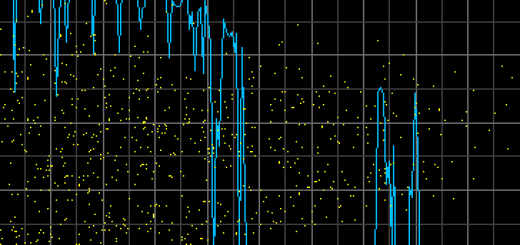Learn IP Subnetting in 15 Minutes
As I was cleaning out some old documentation of mine that I’ve collected over the years, I came across a documents that I wrote way back in 1999 on the topic of TCP/IP basics, specifically IP subnetting. I wrote this tutorial as part of a training session I conducted for co-workers. Back then, TCP/IP was relatively new to many in the IT field, especially those of us who were just started to migrate to an Ethernet network. I opened the document an found that this information is still very relevant in an IPv4 network. It helped me master the topic and pass my TCP/IP course during my MSCE exam. I’ve since then shared this will follow colleagues, MSCE students and others and the feedback was extremely positive. Therefore, I’ve decided to share it with my subscribers. Sign up for our email newsletter to receive the free PDF, Learn IP Subnetting In 15 Minutes. We’ll NEVER, EVER sell your email address. [wysija_form id=”1″]
I know that today there are IP calculators that do all of this work for you so why should you have to read or even understand the concepts of IP concepts, specifically subnetting? I feel if you understand how IP adressing works and how to calculate hosts and subnets manually, without a calculator, then it will help you get a better grasp of the topic. This is especially true for those who are studying to take certification exams which require mastering the understanding of calculating IP addressing without use of a calculator or other reference.
Below is an excerpt from the Learn IP subnetting in 15 Minutes PDF book. It explains how to calculate the subnet mask for a class B network needing 6 subnets.
Example of subnetting one Octet
Assume we have a private network – Class B network
Requirement: We need 6 subnets.
Steps to Defining a Subnet Mask
1. Once you have determined the number of subnets in your network environment, convert this number to binary.
Convert decimal number 6 to binary: (4 + 2 = 6)
2. Count the number of bits required to represent the number of subnets in binary. For example, if you need 6 subnets, the binary value is 110. Representing 6 in binary requires 3 bits.
3. Convert the required number of bits to decimal format in high order (from left to right). For example, if 3 bits are required, configure the first 3 bits of the host ID as the subnet ID. Remember, we have a Class B network and start off using the default subnet mask of 255.255.0.0. The first two octets (or the first 16 bits) are already set to 255 each (all bits are set to 1’s).
The decimal value for 11100000 is 224. The subnet mask is 255.255.224.0 (for a class B address)
4. Calculate the number of hosts per subnet by using the following formula:
2 ^ (# of bits left) – 2
If we are a Class B, we have 16 bits total to use. We are using only 3. This leaves 13 bits unused 2^13 – 2 = 8190 hosts per subnet.





